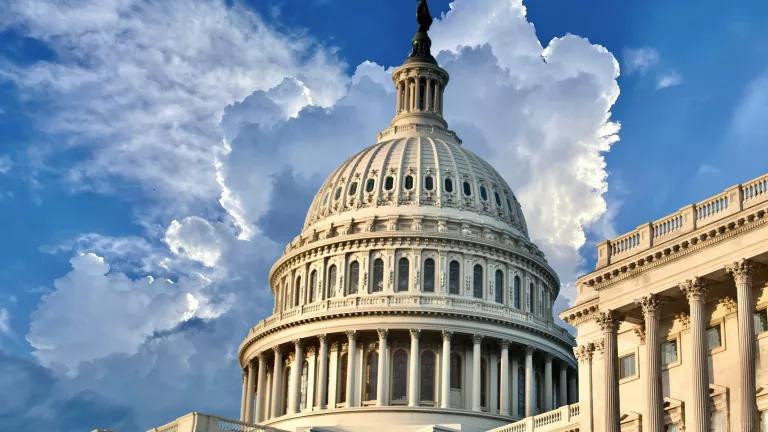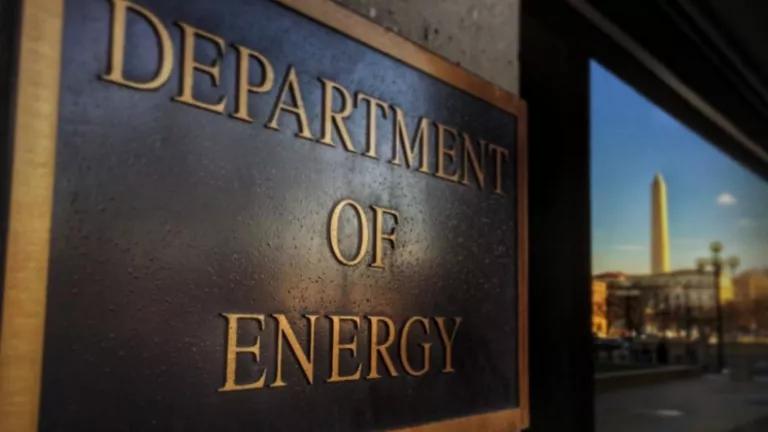NJ Keep It Rollin’: Adopt a Strong RGGI Cap, Gov. Murphy

New Jersey Governor Phil Murphy is off to a strong start in his bid to be one of America’s most climate-friendly governors. Since taking office, he has joined the U.S. Climate Alliance—a bipartisan group of 16 states and Puerto Rico committed to achieve the Paris Climate Agreement—and signed into law one of the most ambitious clean energy laws in the country. (See my colleague Dale Bryk’s summary of the bill here.) What can we say, the guy is on a roll! But now, he needs to build on that momentum by stepping up on the Regional Greenhouse Gas Initiative (RGGI).
How? As NRDC and other groups wrote to the Murphy administration today, the governor now has another major opportunity to continue building his resume as a national climate champion by adopting a strong carbon pollution limit—capping New Jersey’s power plant CO2 emissions at between 12 and 13 million tons in 2020—as the state reenters RGGI.
Notably, Governor Murphy has already pledged to rejoin RGGI, the trailblazing climate program that has helped New Jersey’s neighbors cut pollution in half over the last decade, and which New Jersey originally helped launch. As a participant in RGGI from 2009 to 2011, New Jersey benefitted both economically and environmentally, including from the more than $150 million in growth and 1,700 years of full-time employment that RGGI added to the state’s economy. However, in 2011, Murphy’s predecessor, Chris Christie, recklessly and illegally withdrew the state from the program, and the state’s emissions have since grown. Christie’s decision turned a blind eye not just to the law, but to the dangers of climate change—made so evident by Superstorm Sandy—while forfeiting nearly $300 million in revenue that could have been used to help the state’s residents.
Murphy’s pledge to reverse Christie’s decision is good news for New Jersey and the climate. But several key decisions must still be made to ensure New Jersey’s reentry into RGGI strengthens climate action in both New Jersey and RGGI’s other states, which include Connecticut, Delaware, Maine, Maryland, Massachusetts, New Hampshire, New York, Rhode Island, and Vermont—and soon Virginia too.
Bottom line for NJ: the most critical and immediate decision facing Governor Murphy in the coming weeks on climate policy is how ambitious to be in setting New Jersey’s RGGI power sector carbon pollution cap. Adopting an ambitious cap of between 12 and 13 million tons of CO2 in 2020 would continue New Jersey and RGGI’s climate leadership. Adopting a weak cap would undermine both by setting back not just the Garden State but also the region on climate.
(Note: Similar to the pivotal decision currently before Governor Murphy, Virginia Governor Ralph Northam will also be judged on what cap that state proposes for 2020. Our analysis there points to a starting point of 28 million tons of CO2 for Virginia as being necessary for that state to link to RGGI without undermining climate progress in the region).
The importance of a strong carbon pollution cap
RGGI works by setting a regional cap on the amount of carbon pollution emitted by power plants. The cap declines annually—reducing the total pollution level—and is enforced by selling a decreasing number of permits, known as allowances, via quarterly auctions. Owners of polluting power plants must purchase allowances to account for their emissions. The states use the auction revenues to fund energy efficiency and renewable energy programs that have saved customers $773 million on their energy bills, with billions more expected in future years.
Thus, from a climate and clean energy investment perspective, RGGI’s carbon cap level is key. It determines how much pollution will be avoided and how quickly the RGGI states will move to carbon-free clean energy. Last fall, the RGGI states doubled down on the program’s cap by committing to cut carbon pollution at least 30 percent more by 2030.
Adopting a strong carbon cap for New Jersey
As states like New Jersey and Virginia look to join RGGI, it is critical that they adopt strong carbon caps. If either state were to adopt a weaker cap than RGGI’s, allowing the state to join the program would undermine climate progress by enabling more pollution. The current RGGI states, however, can prevent this outcome by rejecting new participants that fail to adopt caps that are “comparably stringent,” one of the states’ key considerations in expanding the program. In other words, New Jersey and Virginia must first show that they belong in RGGI by committing to—and adopting—strong state carbon caps of their own.
In our letter today, we identify a strong, reasonable, and achievable cap level for New Jersey: 12 to 13 million short tons of CO2 in 2020 with further declines of 3 percent per year through 2030—the same rate adopted by the current RGGI states. (RGGI’s emissions cap is measured in “short tons,” which each equal 2,000 pounds of CO2.)
This number is based on an emissions analysis from NRDC that shows New Jersey is already on track to reduce its emissions to an estimated 12.54 million tons of CO2 in 2020, compared to roughly 18 million tons in 2017, even before the state joins RGGI. This reduction is due to a variety of factors, including impending retirements of coal-fired power plants, reduced utilization of older, less efficient gas-fired units, and accelerated growth in renewable energy and energy efficiency, including under the new clean energy law signed by the governor.
Adopting a cap that fully recognizes and reflects the state’s anticipated 2020 emissions reductions, combined with further reductions through 2030 in line with the current RGGI states’ commitments, will ensure New Jersey does its part under RGGI to cut pollution.
Combined with a similarly ambitious cap for Virginia—28 million tons of CO2 in 2020, as supported by earlier NRDC analysis of the state’s power sector—we also find that an expanded RGGI that includes these two states would be able to reduce carbon pollution at similar or lower costs than the current program. Because the current RGGI has led to numerous economic and public health benefits that more than offset its costs, there’s every reason to believe this expanded program would do the same, generating new benefits in all of its participating states, including New Jersey.
Solidifying the governor’s climate legacy
Adopting a strong RGGI carbon cap for New Jersey is a critical next step in achieving Governor Murphy’s pledge to lead on climate change as well as the recommendations of his Environment and Energy transition team, which earlier this year recommended not simply rejoining RGGI, but also working to strengthen the program. As we stated in our coalition letter, once a strong starting cap level is secured, New Jersey must also continue its outreach to make sure that stakeholders from environmental justice and low-income communities have a meaningful seat at the table. And New Jersey must ensure that the implementation of the program going forward maximizes both pollution reductions and clean energy investments in those communities.
And as New Jersey gets its RGGI house back in order, we also hope the governor will join with his state neighbors to begin tackling another weighty climate issue: the emissions from cars and trucks, which are the largest source of carbon pollution in both New Jersey and the region. By working to modernize and clean up the way we move people and goods, Governor Murphy can further extend and expand on his climate legacy.



